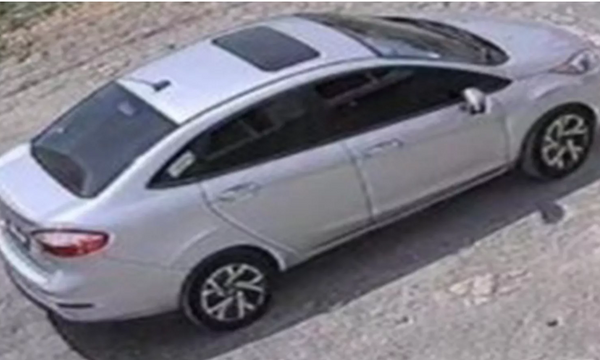
Look, up in the sky! It's a bird, it's a plane, it's ... a car?
Flying cars have been a staple of science fiction and fantasy films for ages. "Blade Runner," "Back to the Future," "The Fifth Element" and "Chitty Chitty Bang Bang" are just a few of the many flicks that feature a set of wheels that can roll out of the garage and climb to the sky.
DON'T MISS: Elon Musk Reveals the Future of Tesla
But that's just the movies, right? Well, perhaps not. New research indicates that this far-flung future might be closer than many of us think.
By 2030, Evtol -- electric vertical takeoff and landing -- aircraft could offer a safe, affordable and sustainable way to travel and represent a multibillion-dollar market opportunity, according to the consulting firm McKinsey & Co.
Urban and advanced air mobility, a segment that includes Evtol aircraft -- saw record funding in 2021, McKinsey said, with roughly $6.9 billion in new investments. Funding cooled in 2022, partly due to macroeconomic conditions, but remained well ahead of its prepandemic pace.
Of course, no mention of flying cars would be complete without "The Jetsons," the Hanna-Barbera animated sitcom that aired from Sept. 23, 1962, through March 17, 1963, and depicted a world where flying cars were the only way to drive.
'Safety Is Our Priority': Jetson One
Jetson is also the name of a Swedish company that recently released its first flying car, the Jetson One, for sale at $98,000.
That's slightly cheaper than the Tesla (TSLA) Model X. And the Jetson doesn't have to worry about traffic jams.
"We aim to make the skies available for everyone with our safe personal electric aerial vehicle," the company said on its website.
The aluminum and carbon-fiber aircraft is powered by eight electric motors, has a top speed of about 63 mph (101 kph), and a flight time of about 20 minutes. Users do not require licenses to fly the aircraft in the U.S., the company says.
Declaring that "safety is our priority," Jetson said its flying machine has a race-car-inspired safety cell that protects the pilot.
Jetson 1 can sustain continuous flight with the loss of one motor, the company said. It has an auto-land function and "multiple safety features to protect the pilot in case of an emergency."
Jetson has competitors.
The Seattle startup Jetoptera said its vision was "to create a world where aerial mobility is commonplace." It's working on a vertical-takeoff-and-landing aircraft that will be capable of speeds up to Mach 0.8, which comes out to about 614 mph.
In January, Aska of Los Altos, Calif., showed off its Evtol aircraft at the Consumer Electronics Show convention. .
So what will this brave new world of flying vehicles look like?
Big Challenges for the Flying-Car Industry
A study in the Informs journal Manufacturing & Service Operations Management suggests that "the multibillion-dollar industry needed to make flying cars a reality has the potential to solve societal problems and develop a new revenue stream for the U.S. and other economies."
But the researchers warn that it’s one thing to have vehicles capable of “Urban Aerial Mobility” and quite another to make the societal changes needed for normal use of such vehicles.
Vikrant Vaze, a professor at the Thayer School of Engineering at Dartmouth, said that "technologies already exist to build and fly the kinds of vehicles that could ferry people throughout urban areas as part of a normal routines."
“But the big challenges center on conceiving and creating the kind of transportation infrastructure, systems and protocols that would enable the safe and smooth transition to urban aerial mobility," he said in a statement.
The study’s authors pointed to cities, operators and agencies -- such as New Zealand, Singapore, NASA and several airlines -- that are already investing heavily in UAM to develop electric vertical-takeoff-and-landing vehicles, UAM systems and networks.
“The challenge will be to create dedicated infrastructure for vehicles to take off and land,” Vaze said. “We will need to establish flying lanes and ‘roads’ not far different from today’s transportation systems built around paved roads on land, shipping lanes in the ocean, or air corridors used by aircraft.”
And even when flying cars do become the norm, they won't solve all our problems.
George Jetson had a flying car and he got sucked under a treadmill every single week.







